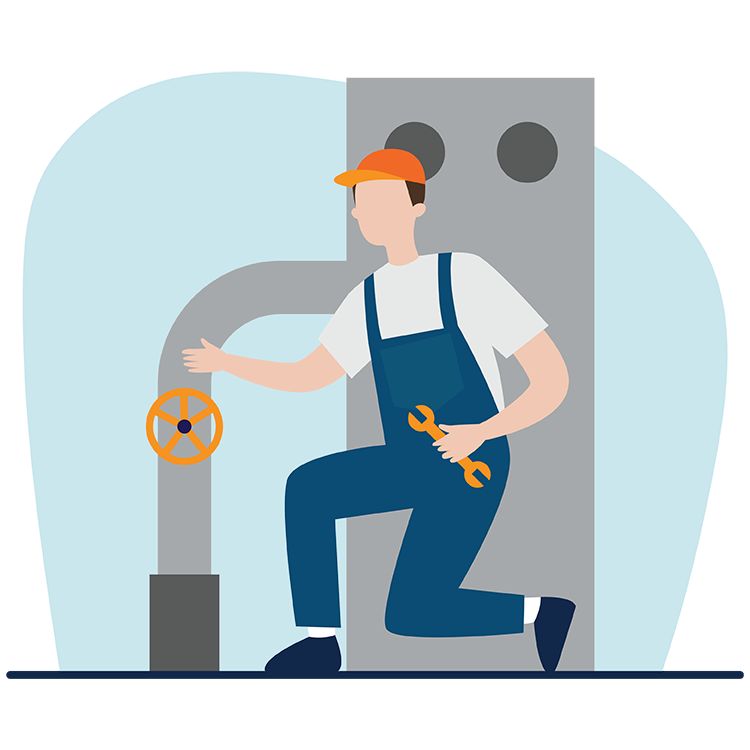Professional Drain Cleaning Alabaster AL to Maintain Your Pipeline Flowing
Professional Drain Cleaning Alabaster AL to Maintain Your Pipeline Flowing
Blog Article
A Detailed Overview to Reliable Hot Water Heater Setup for Ideal Efficiency
Getting started on the job of installing a water heating unit is a venture that requires precision and a methodical approach for accomplishing optimum efficiency. As you continue, the intricacies of linking water supply lines and establishing up dependable electrical or gas connections await, appealing understandings right into making sure performance and reliability.
Selecting the Right Hot Water Heater

Next, think about the dimension and capability of the hot water heater. It's vital to analyze your household's warm water requirements, which can vary based on the variety of occupants and their use patterns. A system that's also small may result in inadequate warm water, while an extra-large version could result in unnecessary power usage.
Performance scores additionally play a critical duty in option. Seek water heating systems with high Power Factor (EF) ratings, indicating exceptional performance and reduced power use. Tankless versions, though typically more expensive ahead of time, deal significant power cost savings in time because of their on-demand home heating capacities.
Preparing the Installment Area
Prior to setting up a brand-new water heating unit, careful prep work of the setup area is necessary. It's essential to gauge the space meticulously to accommodate the water heating system's dimensions, ensuring appropriate clearance around the unit for effective procedure and servicing.
Inspect the floor for security, as the water heating unit will certainly require a strong, degree surface to operate properly. If essential, mount a drip frying pan under the device to capture prospective leaks or spills, stopping water damage to the surrounding area.
Additionally, ensure that all necessary devices and products get on hand prior to beginning the installation. This includes items such as wrenches, screwdrivers, a level, and any kind of added equipment required for mounting and securing the heater. A well-prepared setup area establishes the structure for a successful hot water heater arrangement, enhancing performance and safety.
Connecting Water Supply Lines
When attaching water system lines to your recently installed hot water heater, it is essential to make sure that all connections are leak-free and safe to maintain effective procedure and avoid water damage. Begin by recognizing the hot and cool water lines. The cold water inlet is typically noted with a blue tag or a "C", while the warm water outlet is noted with a red label or an "H".
Usage flexible hot water heater connectors to assist in a simpler installment process. These adapters can absorb resonance and enable mild movement, minimizing the risk of leakages. Prior to attaching the adapters, place a plumber's tape around the threaded ends of the hot water heater's inlet and electrical outlet pipes - Drain Cleaning Alabaster AL. look at here now This tape acts as a sealant, preventing leakages. Meticulously connect the versatile pipes to the particular inlet and electrical outlet, ensuring that they are not over-tightened yet tight, which could damage the threads.
When links remain in place, slowly switch on the main water system shutoff. Evaluate each link for leakages by visually checking and feeling for wetness. Tighten connections as required, and make certain the stress alleviation valve is appropriately mounted, guarding versus too much pressure accumulation.
Establishing Up Electric or Gas Connections
Properly setting up the electrical or gas links for your water heating unit is a critical step to make certain safe and efficient procedure. For electric water heaters, begin by confirming that the electrical circuit is suitable with the heater's voltage and amperage demands.
For gas water heating units, safety and security is critical. Attach the gas line to the water heater utilizing an adaptable gas adapter, ensuring it is appropriately threaded and secured with pipe joint substance or Teflon tape suitable for gas connections.
Once links are made, inspect for any type of possible leaks. For gas lines, use a soapy water solution to the joints; bubbles suggest a leakage. For electric weblink links, double-check that all wiring is safe and effectively insulated, maintaining compliance with neighborhood electric codes.
Evaluating and Changing for Performance
With the electric and gas links firmly in area, the following action is evaluating the functional effectiveness of your water heating unit. Begin by meticulously activating the water and making certain there are no leakages at any one of the shutoffs or joints. When verified, proceed to fill the storage tank, taking note of the pressure and temperature settings. It is recommended to set the thermostat to a recommended temperature level of around 120 ° F(49 ° C) to stabilize power effectiveness and comfort.
Following, do a detailed assessment to make sure the burner or gas heaters are functioning appropriately. For electrical heaters, make use of a multimeter to confirm if the elements are attracting the suitable current. In gas versions, observe the burner official website fire; it must be constant and blue, suggesting efficient burning.
Adjust the setups as required to get rid of ineffectiveness. Consider applying insulation procedures, such as adding a water heating unit blanket, to additionally enhance efficiency by minimizing warm loss. Additionally, inspect the anode pole's condition, as a shabby rod can reduce performance and lead to container rust.
Verdict
Efficient water heater installation is important for making sure optimum efficiency and power financial savings. Firmly attaching water supply lines and thoroughly establishing up electric or gas links decrease possible concerns.

Correctly setting up the electrical or gas connections for your water heating unit is a crucial step to guarantee effective and risk-free operation. For electric water heating units, begin by verifying that the electrical circuit is compatible with the heating unit's voltage and amperage demands. Link the gas line to the water heating unit utilizing a versatile gas port, ensuring it is correctly threaded and sealed with pipe joint substance or Teflon tape ideal for gas links.
Report this page